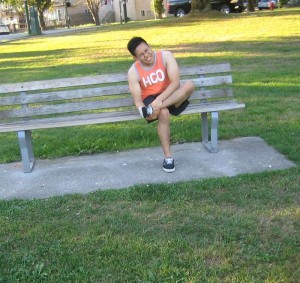Retrocalcaneal bursitis involves inflammation and tissue damage in the retrocalcaneal bursa. Generally, this condition results to heel pain.
It is important to note that the retrocalcaneal bursa can end up inflamed as the Achilles tendon rubs over the bursa, resulting to friction on the heel bone. The damage can occur after a fall or during sports. In some cases, it steadily arises from repeated damage to the bursa from certain activities such as jumping and running or excessively loading the heel.
It is also considered as a secondary injury linked with long-standing ailments such as:
- Plantar fasciitis
Swelling and pain over the rear region of the heel. - Achilles tendonitis
- Rheumatoid arthritis
- Heel spurs
- Fibromyalgia
What are the signs?
If an individual has retrocalcaneal bursitis, the following signs might be present:
- Swelling and pain over the rear region of the heel
- Discomfort when leaning on the heel
- Intensifying pain if the calf muscle is used
Management of retrocalcaneal bursitis
- Cold therapy – the application of an ice pack is recommended to lessen the pain and swelling.
- Medications – anti-inflammatory drugs or non-steroidal anti-inflammatory drugs (NSAIDs) can be used. If in doubt, a doctor should be consulted if these drugs can be used.
- Corticosteroid injections – one shot of a corticosteroid together with a local anesthetic directly into the bursa can help stimulate the healing process.
When a physiotherapist is consulted, a variety of treatment options are utilized to lessen the pain and inflammation caused by retrocalcaneal bursitis. The commonly used options include electrotherapy, soft tissue massage, de-loading taping techniques and acupuncture.

